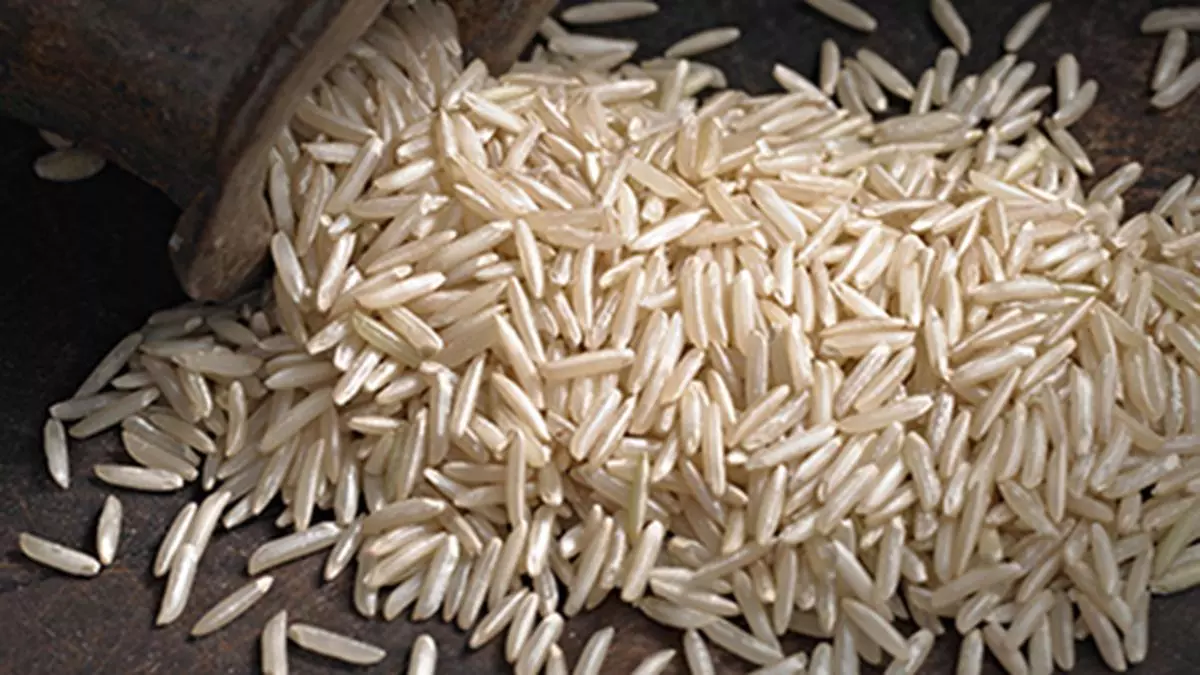Basmati exports set to top record $5 billion-mark this fiscal
India’s basmati shipments are set to cross the $5 billion-mark during the current financial year on robust demand from traditional markets in Middle East and other markets such as the United States and the United Kingdom.
Basmati shipments have maintained a growth rate of about 20 per cent in the first ten months of the financial year 2023-24 (April-January) with the export value touching $4.586 billion. With shipments gathering pace in February, ahead of the Ramadan festive season, trade sources expect the value to exceed $5 billion for the current fiscal.
“Demand has been good from the traditional buyers in the Middle East. Despatches ahead of Ramadan have been good,” sources at the All India Rice Exporters Association said, adding that the value of the shipments could touch a new record surpassing the $5-billion mark.
2013-14 record
India’s basmati exports had touched a record $4.87 billion during 2013-14 on high prices and have been fluctuating in the subsequent years, despite gains in shipment volumes.
“The consumption of basmati rice in the various export markets has consistently grown from 0.5 million tonnes (mt) to 4 mt between 1995 and 2023. The share of basmati rice in the global rice trade is 8 per cent. The growth story of basmati could be bifurcated into three stages such as WTO implementation period benefitting in the European market, consumers in the Iranian market adapting Pusa-1121 and growing non-resident Indian population across world.
“An important fact is that our basmati rice export to Europe has fallen during last 6 years. If such situation could have prevented, our exports would have crossed the $5-billion mark much earlier,” said S Chandrasekaran, trade analyst and author of the book Basmati Rice: The Natural History Geographical Indication.
Value realisation
“Basmati rice has grown in volume terms but the price growth in real terms is paltry. If the export price realisation is analysed in real terms during the last 30 years, the price realization has been inconsistent and commodification of basmati could be witnessed. The consistently higher prices of scotch whisky and champagne are an example of value realisation and branding strategy. Exporters and the government need to make consistent efforts on price stabilisation, imbibe premium in the price and bring permanent narrative to keep valuation above a particular threshold. Basmati rice reforms and marketing 2.0 is essential for this,” said Chandrasekaran.
Top five buyers of the Indian basmati accounted for about 58.43 per cent of the volumes of 3.54 million tonnes during April-December period of 2023-24. Also these top five buyers accounted for 57.72 per cent of the total value of $4.586 billion. Saudi Arabia continues to be the largest buyer this year with volumes of 6.75 lakh tonnes and value of $780 million, followed by Iraq with volumes of 5.01 lakh tonnes and value of $544 million during April-December period. Iran has been the third largest buyer with volumes of 5.16 lakh tonnes and value of $519 million.
Interestingly, the US has displaced the United Arab Emirates (UAE) to emerge as the fourth largest buyer during the April-December period. The US has bought 1.75 lakh tonnes of basmati valued at $228 million. It would be interesting to watch whether the US would figure among the top five buyers when the final figures for the fiscal 2023-24 are compiled in the days ahead. USA was the sixth largest buyer of Indian basmati during 2022-23.
